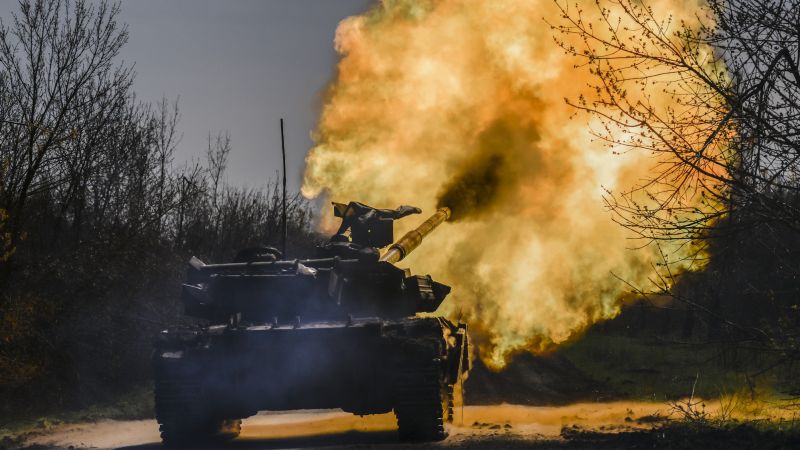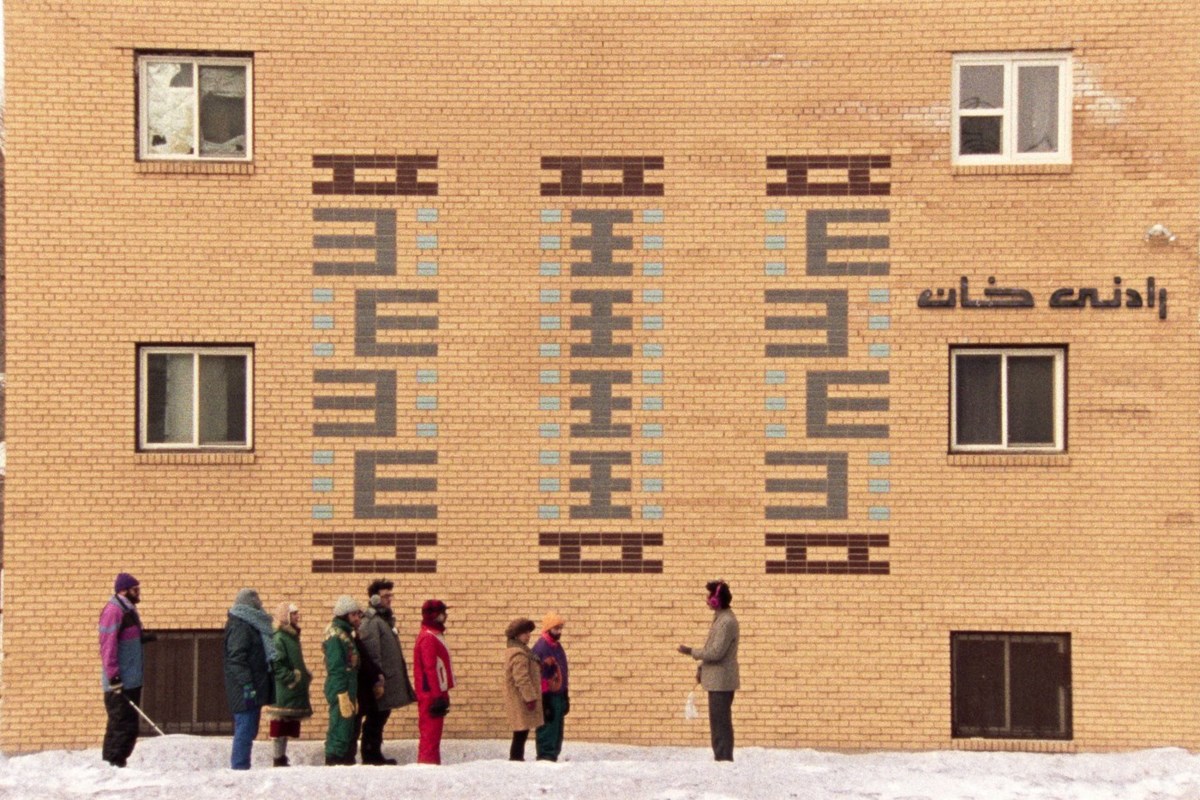Impact Of Warmer Weather On Russia's Spring Offensive In Ukraine

Table of Contents
The Rasputitsa Factor: Mud Season's Impact on Military Maneuverability
The term Rasputitsa, meaning "bad roads" in Russian, refers to the period of spring thaw when melting snow and ice turn the ground into a sea of thick, impassable mud. This phenomenon has historically played a crucial role in military campaigns across Eastern Europe, and its impact on Russia's spring offensive in Ukraine cannot be overstated.
Reduced Mobility for Armored Vehicles
The thawing of the ground renders many roads and fields impassable for heavy armored vehicles, including tanks and mechanized infantry fighting vehicles, which are central to Russia's conventional warfare doctrine. This significantly reduces their mobility and effectiveness.
- Impassable terrain: The deep mud can easily disable or trap tanks, rendering them vulnerable targets.
- Logistical nightmare: Moving supplies and equipment through this muddy terrain becomes incredibly difficult and time-consuming, potentially leading to supply shortages on the front lines.
- Historical precedent: Past military campaigns, including those during World War II, have vividly demonstrated the crippling effect of Rasputitsa on armored offensives. The slow movement of large vehicles increases fuel consumption and reduces the efficiency of operations.
Increased Vulnerability to Ambush and Counterattack
The reduced mobility imposed by the Rasputitsa makes Russian forces more vulnerable to Ukrainian attacks. The slower pace of movement allows Ukrainian forces to utilize guerrilla tactics more effectively.
- Ambush opportunities: Slow-moving columns of Russian armor become sitting ducks for ambushes using anti-tank weapons and explosives.
- Effective defense: The mud creates natural defensive positions for the Ukrainians, slowing down Russian advances and providing valuable time for fortification and preparation.
- Disrupted supply lines: The difficulty of moving supplies increases the risk of supply line disruptions, leaving Russian units vulnerable and potentially isolated.
Impact on River Crossings and Logistics
The spring thaw brings another significant challenge: swollen rivers and widespread flooding. This further complicates Russian military operations and logistics.
Swollen Rivers and Flooding
The melting snow significantly increases river water levels, making river crossings extremely difficult, if not impossible, for armored vehicles and potentially even infantry. This can severely disrupt Russian supply chains and troop movements.
- Disrupted supply lines: Rivers serve as natural barriers and vital transport routes. Flooding makes these routes unusable and isolates units.
- Bridge destruction: The increased water flow can damage or destroy existing bridges and other infrastructure, hindering movement.
- Logistical bottlenecks: The necessity of finding alternative routes adds significant delays and logistical complications.
Challenges to Infrastructure
The spring thaw causes significant damage to roads and bridges, further exacerbating the logistical challenges faced by the Russian military. Repairs are slow and difficult in the muddy conditions.
- Road damage: Heavy military vehicles exacerbate the damage to already weakened roads.
- Bridge collapses: Flooding and weakened foundations lead to the collapse of bridges, creating major obstacles to movement.
- Delayed repairs: Repairs to roads and bridges take significantly longer in the muddy conditions.
Supply Line Vulnerability
The combination of mud, flooding, and damaged infrastructure creates significant vulnerabilities in the Russian supply lines. These become easier targets for Ukrainian forces.
- Easier targets: Slow-moving convoys are more susceptible to attack.
- Disruption of resupply: Delays in resupply can weaken Russian forces at the front.
- Increased reliance on air transport: The limitations on ground transport forces Russia to increase reliance on potentially vulnerable air supply lines.
The Changing Battlefield Landscape: Advantages for Ukraine's Defense
The Rasputitsa significantly alters the battlefield landscape, providing several advantages to the Ukrainian defense.
Improved Ukrainian Defensive Positions
The muddy terrain hampers Russian advances, giving Ukrainian forces a significant defensive advantage. The mud itself acts as a natural obstacle, slowing down enemy movements and creating chokepoints that can be easily defended.
- Natural fortifications: The mud creates naturally defensible positions.
- Reduced enemy mobility: The slow movement of Russian forces gives the Ukrainians ample time to prepare and reinforce their positions.
- Effective ambushes: The mud makes it easier to set up ambushes and effectively utilize anti-tank weapons.
Opportunities for Ukrainian Counteroffensives
The Rasputitsa creates opportunities for Ukrainian counteroffensives, potentially exploiting the weaknesses of a bogged-down Russian offensive.
- Exploiting vulnerabilities: Ukrainian forces can target slow-moving and vulnerable Russian units.
- Rapid strikes: Ukrainian mobile units can launch rapid strikes and then retreat before the Russians can effectively respond.
- Strategic encirclement: In some cases, the mud can assist in creating opportunities to encircle and isolate Russian units.
Increased Effectiveness of Ukrainian Artillery
The limited mobility of Russian forces increases their vulnerability to long-range artillery strikes. The mud restricts their ability to maneuver and relocate, making them easier targets.
The Role of Aerial and Drone Warfare
While ground forces struggle with the Rasputitsa, aerial and drone warfare will likely play an even more critical role.
Increased Reliance on Air Power
Russia may increase its reliance on air power to compensate for the limitations imposed by the weather on ground forces. This includes air support for ground troops and potentially increased air strikes.
- Air superiority: Maintaining air superiority becomes crucial for delivering supplies and supporting ground operations.
- Air strikes: Air power may be used more frequently to target Ukrainian positions and disrupt their counteroffensives.
- Precision strikes: The use of precision-guided munitions will become increasingly important to minimize collateral damage.
Drone Usage and Effectiveness
Drones continue to be a vital asset for both sides, relatively unaffected by the muddy terrain. They play a crucial role in surveillance and targeting.
- Reconnaissance: Drones provide valuable intelligence on enemy movements and positions.
- Targeting: Drones can effectively target Russian artillery and other assets, even in challenging terrain.
- Limited countermeasures: While susceptible to jamming or anti-drone measures, the mobility offered by drones makes them an important tool, relatively unaffected by the Rasputitsa.
Conclusion
The impact of warmer weather, and specifically the Rasputitsa, on Russia's spring offensive in Ukraine is significant. The resulting mud, flooding, and damage to infrastructure severely limit the mobility and effectiveness of Russian armored forces, creating opportunities for Ukrainian counteroffensives and a stronger defensive posture. The changing conditions emphasize the importance of air power and drone warfare. The Rasputitsa acts as a significant geopolitical wildcard, influencing the strategic calculus on both sides of the conflict.
Call to Action: Stay informed on the ongoing impact of weather and other factors on Russia's spring offensive in Ukraine. Follow our updates for the latest analysis on the conflict and its evolving dynamics. Learn more about the impact of the Rasputitsa on military strategy and the ongoing Ukraine war.

Featured Posts
-
 Schneider Electrics Strong 2024 Outlook Revenue And Earnings Growth Driven By Data Center Boom
Apr 30, 2025
Schneider Electrics Strong 2024 Outlook Revenue And Earnings Growth Driven By Data Center Boom
Apr 30, 2025 -
 Duolingos Ai Driven Shift Replacing Contract Workers
Apr 30, 2025
Duolingos Ai Driven Shift Replacing Contract Workers
Apr 30, 2025 -
 Vusion Group Amf Cp Document 2025 E1029754 Explained
Apr 30, 2025
Vusion Group Amf Cp Document 2025 E1029754 Explained
Apr 30, 2025 -
 Obnova Konania V Pripade Unosu Studentky Sone Rozhodnutie Sudu V Stredu
Apr 30, 2025
Obnova Konania V Pripade Unosu Studentky Sone Rozhodnutie Sudu V Stredu
Apr 30, 2025 -
 Best Cruise Lines In The Usa Reviews And Comparisons
Apr 30, 2025
Best Cruise Lines In The Usa Reviews And Comparisons
Apr 30, 2025
Latest Posts
-
 Alex Ovechkins 894th Goal Nhl Record Update Cp News Alert
Apr 30, 2025
Alex Ovechkins 894th Goal Nhl Record Update Cp News Alert
Apr 30, 2025 -
 Celtics Defeat Cavaliers Derrick Whites Performance And 4 Crucial Takeaways
Apr 30, 2025
Celtics Defeat Cavaliers Derrick Whites Performance And 4 Crucial Takeaways
Apr 30, 2025 -
 Ovechkin Ties Gretzkys Nhl Goal Record Cp News Alert
Apr 30, 2025
Ovechkin Ties Gretzkys Nhl Goal Record Cp News Alert
Apr 30, 2025 -
 4 Takeaways From The Celtics Victory Over The Cavaliers Derrick Whites Impact
Apr 30, 2025
4 Takeaways From The Celtics Victory Over The Cavaliers Derrick Whites Impact
Apr 30, 2025 -
 Rekord Ovechkina Kinopoisk Pozdravlyaet Novorozhdennykh Eksklyuzivnymi Soskami
Apr 30, 2025
Rekord Ovechkina Kinopoisk Pozdravlyaet Novorozhdennykh Eksklyuzivnymi Soskami
Apr 30, 2025
